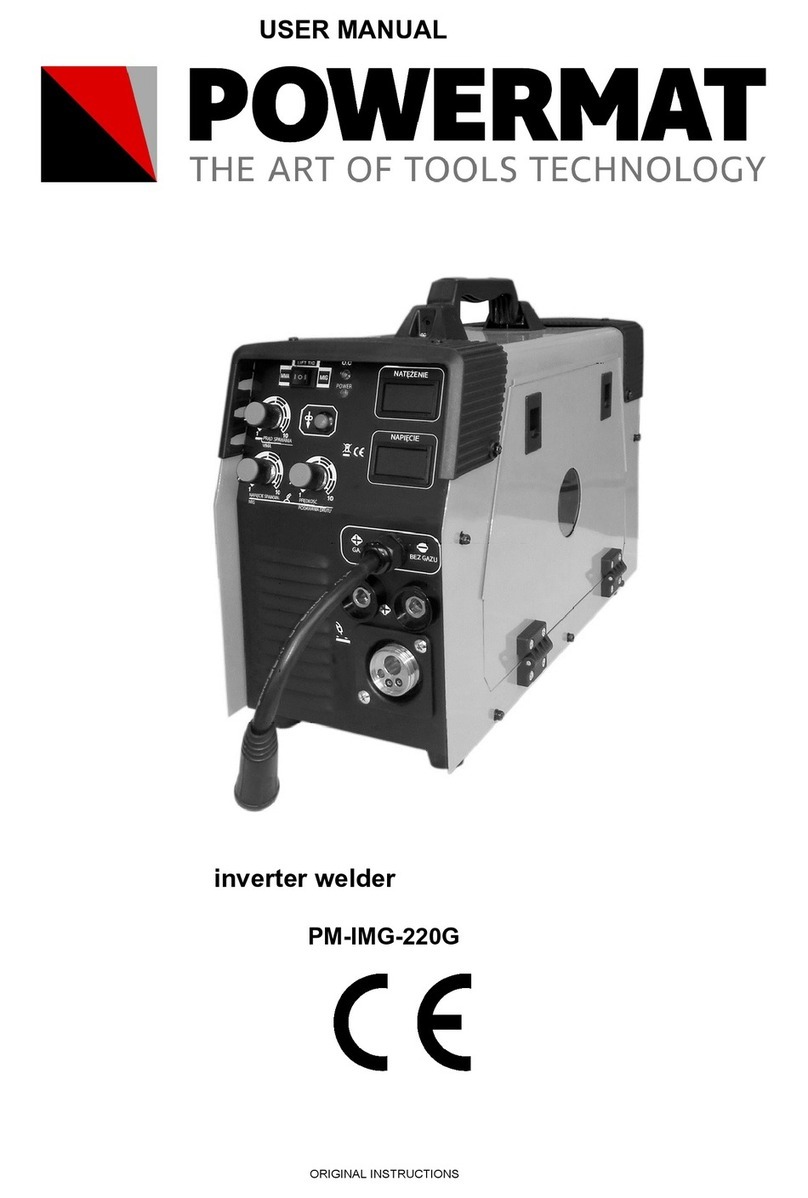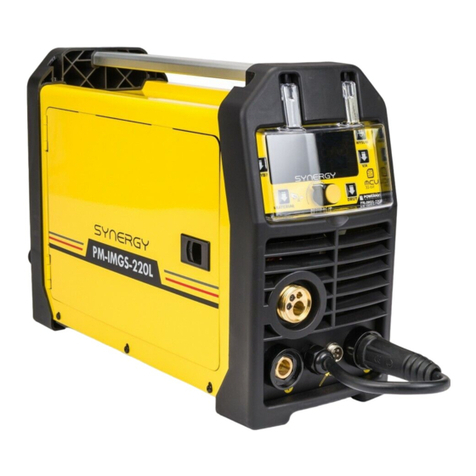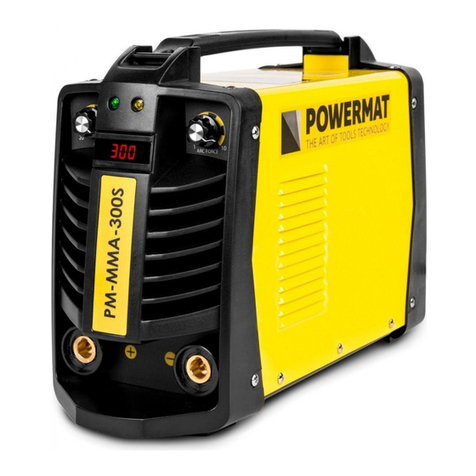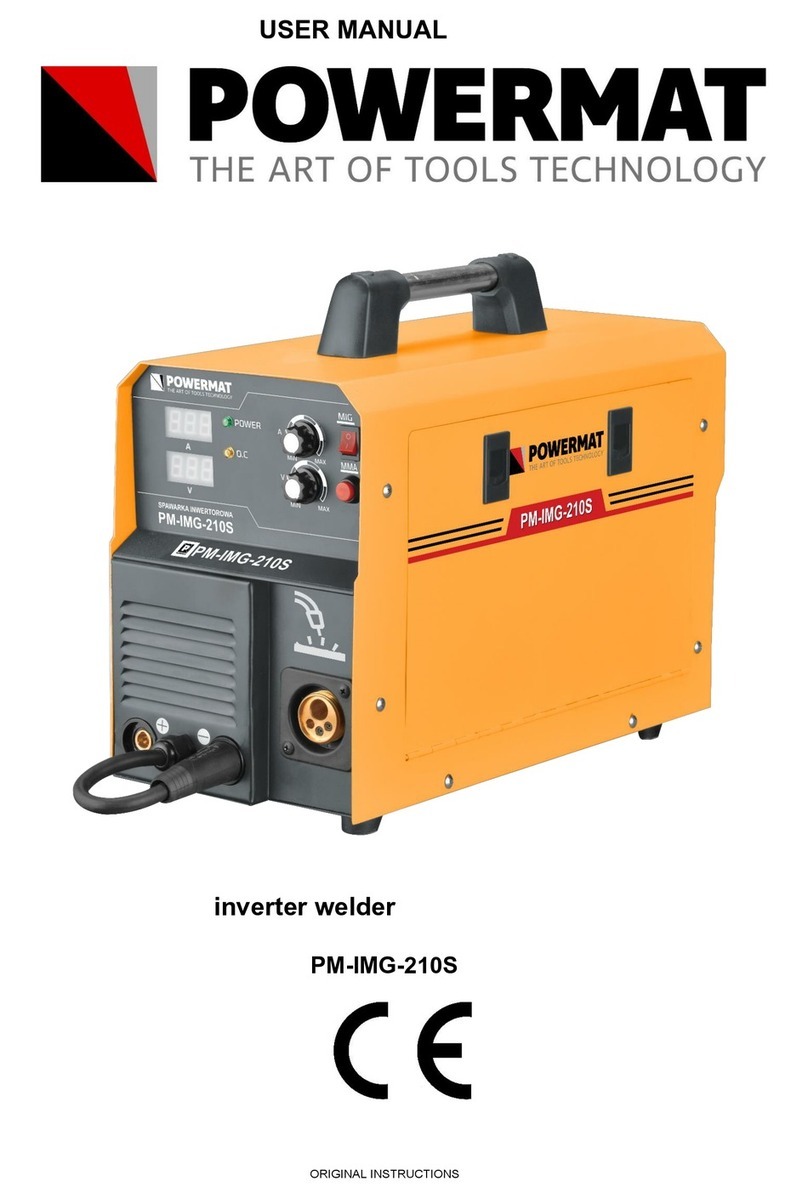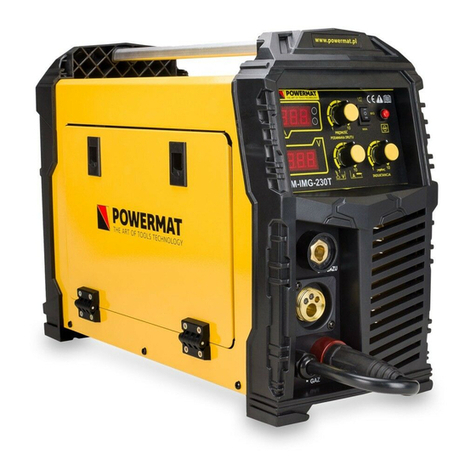
TABLE OF CONTENTS
TABLE OF CONTENTS ................................................ .................................................. .................................................. .................... 2
WARNING / INFORMATION SYMBOLS .............................................. .................................................. .................... 3
PURPOSE OF THE DEVICE ................................................ .................................................. .......................................... 4
SECURITY................................................. .................................................. .................................................. ......... 5
Welding safety ............................................... .................................................. .................................................. ........... 5
General safety instructions ............................................... .................................................. .................................................. ........... 7
Protection against electric shock .............................................. .................................................. .................................................. .. 8
Electromagnetic field ................................................ .................................................. .................................................. ......................... 8
Pacemakers ................................................ .................................................. .................................................. ...................................... 8
DEVICE DESCRIPTION ................................................ .................................................. .................................................. ......... 9
I Front panel ............................................... .................................................. .................................................. ........................................... 9
II. Front panel cont. + back ................................................ .................................................. .................................................. .......................... 10
MENU AND SETTINGS ............................................... .................................................. .................................................. .... 11
III Menu - selection of welding method ............................................ .................................................. .................................................. ........... 11
IV Menu - gas shield selection (MIG) ......................................... .................................................. .................................................. ............. 11
V Menu - selection of wire diameter ............................................ .................................................. .................................................. .................. 12
IV Menu - gas shield selection (MIG) ......................................... .................................................. .................................................. ............. 12
IV Menu - gas shield selection (MIG) ......................................... .................................................. .................................................. ............. 13
IV Menu - adjustment .............................................. .................................................. .................................................. ................................. 13
IV Menu - LED displays ............................................. .................................................. .................................................. ...................... 13
DESCRIPTION OF MARKINGS ON THE RATING PLATE ............................................. .................................................. ............... 14
TECHNICAL DATA................................................ .................................................. .................................................. ....... 15
GENERAL CONDITIONS OF WORK WITH THE DEVICE ............................................. .................................................. ..................... 15
General thoughts ................................................ .................................................. .................................................. ......................................... 15
Basic activities before starting work ............................................. .................................................. ...................................... 15
Activities during welding ............................................... .................................................. .................................................. ................... 16
Prohibited activities ................................................ .................................................. .................................................. ............................. 16
Basic activities after the end of work ............................................. .................................................. ............................................. 16
Final remarks ................................................ .................................................. .................................................. ...................................... 16
USING THE DEVICE ................................................ .................................................. ................................................ 17
Connecting to the network ............................................... .................................................. .................................................. ................................. 17
Loading the Electrode Wire ............................................... .................................................. .................................................. ............. 17
Connecting the shielding gas ............................................... .................................................. .................................................. ................. 18
MMA welding ............................................... .................................................. .................................................. .......................... 18
Welding with the MIG-MAG method in manual mode .......................................... .................................................. ........................................ 18
TIG-lift welding ............................................. .................................................. .................................................. .......................... 19
BASIC INFORMATION ON WELDING .............................................. .................................................. ..... 20
ELECTRODES WELDING IN PRACTICE .............................................. .................................................. .......................... 20
Electric arc welding ............................................... .................................................. .................................................. ................ 21
Choosing the right electrode ............................................... .................................................. .................................................. ................. 21
Correct welding position ............................................... .................................................. .................................................. ................ 22
Tips on arc ignition .............................................. .................................................. .................................................. ............. 22
Correct arc length ............................................... .................................................. .................................................. ......................... 23
Correct welding speed ............................................... .................................................. .................................................. .............. 23
Welding practice ................................................ .................................................. .................................................. ................................. 23
Practical exercise ................................................ .................................................. .................................................. .............................. 23
Base metals ................................................ .................................................. .................................................. .............................. 24
DEFECTS OF WELDINGS ................................................ .................................................. .................................................. ............... 25
MIG / MAG EDGE PREPARATION ............................................ .................................................. ...... 27
MIG / MAG WELDING TECHNOLOGY .............................................. .................................................. ............... 28
PRACTICAL RECOMMENDATIONS FOR MIG / MAG WELDING ............................................ ........................................... 29
METHODS OF TRANSMITTING METAL IN AN ELECTRIC ARC .............................................. ............................................. thirty
PROTECTIVE GASES ................................................ .................................................. .................................................. ........ thirty
MAINTENANCE AND STORAGE ............................................... .................................................. ............................. 31
Maintenance ................................................. .................................................. .................................................. .......................................... 31
Storage................................................. .................................................. .................................................. .................................... 32
SERVICE ................................................. .................................................. .................................................. ....................... 32
WARRANTY................................................. .................................................. .................................................. ............... 32
Manufacturer warranty exclusions ............................................... .................................................. .................................................. .......... 32
DISPOSAL OF USED DEVICES ............................................... .................................................. .................................. 33
MANUFACTURER'S DATA ................................................ .................................................. .................................................. .... 34
DECLARATION OF CONFORMITY ................................................ .................................................. .............................................. 34
2






